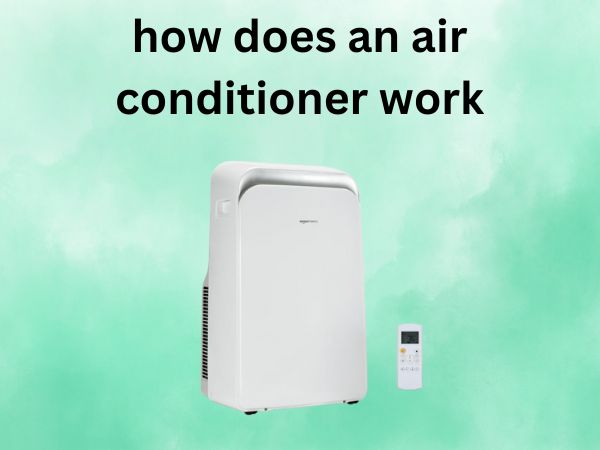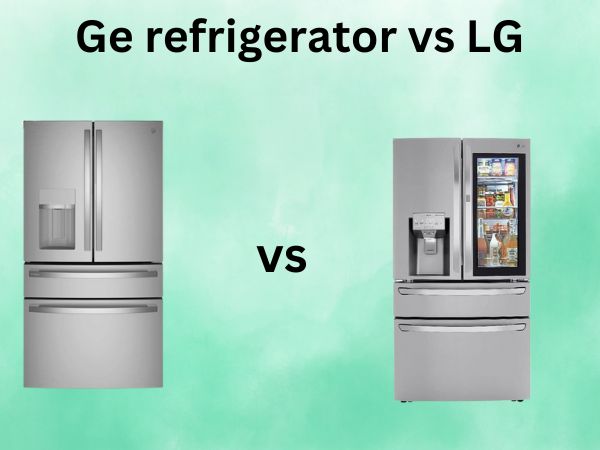How Does an Air Conditioner Work [The Complete Guide to Cool Comfort]
Ever wondered how that magical box in your window or that system humming quietly in your basement manages to turn sweltering summer heat into refreshing cool air? You’re not alone! Most of us take our air conditioners for granted until they stop working on the hottest day of the year. Understanding how your AC actually works isn’t just fascinating—it can help you use it more efficiently, troubleshoot problems, and make better decisions about maintenance and upgrades.
Table of Contents
The Magic Behind Your Cool Air: Understanding AC Basics
What Exactly Is an Air Conditioner?
Think of your air conditioner as a heat magician. It doesn’t actually create cold air—that’s impossible. Instead, it performs an impressive trick: it removes heat from inside your home and dumps it outside. It’s like having a bouncer at a club, but instead of removing rowdy customers, it’s kicking heat out of your house.
Your AC is essentially a heat pump that works in reverse. While a heat pump brings warmth from outside to inside during winter, your air conditioner does the opposite during summer. It’s constantly moving heat from where you don’t want it (inside your home) to where you don’t mind it (outside).
The Science of Staying Cool
The secret lies in a fundamental principle of physics: when a liquid evaporates into a gas, it absorbs heat from its surroundings. You’ve experienced this yourself—when you sweat, the evaporation of moisture from your skin cools you down. Your air conditioner uses this same principle, but with a special fluid called refrigerant instead of sweat.
But here’s where it gets clever: your AC doesn’t just let the refrigerant evaporate and disappear. It captures that gas, compresses it back into a liquid, and repeats the process over and over again. It’s like having an infinitely recyclable cooling system that never runs out of “sweat.”
The Four Essential Components That Make It All Happen
The Evaporator Coil: Where the Magic Begins
Located inside your home, the evaporator coil is where the actual cooling happens. Picture a network of thin copper tubes, often with aluminum fins attached to increase surface area. Cold refrigerant flows through these tubes, and as warm air from your home passes over them, the refrigerant absorbs that heat and evaporates from liquid to gas.
This is like a sponge soaking up spilled water, except the “sponge” is absorbing heat instead of liquid. The evaporator coil literally pulls heat out of your air, leaving behind cooler, more comfortable air that gets blown back into your home.
The Compressor: The Heart of Your AC
If the evaporator coil is where the magic happens, the compressor is the muscle that makes it all possible. Located in the outdoor unit, this powerful pump takes the low-pressure refrigerant gas from the evaporator and compresses it into a high-pressure, high-temperature gas.
Think of the compressor as a bicycle pump on steroids. Just as pumping air into a tire requires energy and creates heat, compressing refrigerant requires electricity and significantly raises both its pressure and temperature. This step is crucial because it prepares the refrigerant for the next phase of the cooling cycle.
The Condenser Coil: Heat’s Exit Strategy
The condenser coil, also located outside your home, is where your AC gets rid of all that unwanted heat. The hot, high-pressure refrigerant gas flows through these coils while a fan blows outdoor air across them. As the refrigerant releases its heat to the outside air, it cools down and condenses back into a liquid.
This is essentially the opposite of what happens at the evaporator coil. Instead of absorbing heat, the condenser coil is rejecting heat. It’s like your AC is breathing out hot air while breathing in the heat from your home.
The Expansion Valve: The Pressure Controller
The expansion valve might seem like a small component, but it plays a vital role in the cooling process. This device controls the flow of refrigerant from the high-pressure condenser side to the low-pressure evaporator side. As the liquid refrigerant passes through this valve, its pressure drops dramatically, causing it to cool down significantly.
Think of it as a pressure release valve that prepares the refrigerant for another round of heat absorption. Without proper pressure control, the entire system would fail to cool effectively.
The Refrigeration Cycle: Your AC’s Daily Dance
Step 1: Heat Absorption (Evaporation)
The cycle begins inside your home with the cold, low-pressure liquid refrigerant entering the evaporator coil. As warm air from your house blows across these coils, the refrigerant absorbs that heat energy and transforms from a liquid into a gas. This phase change is what actually cools the air—it’s the same reason you feel cold when you get out of a swimming pool on a windy day.
The now-gaseous refrigerant carries all that absorbed heat away from your living space, heading toward the compressor. Your indoor fan continues circulating air across the cold coils, gradually lowering the temperature throughout your home.
Step 2: Compression and Temperature Rise
The low-pressure refrigerant gas reaches the compressor, where it gets squeezed into a much smaller space. This compression dramatically increases both the pressure and temperature of the refrigerant. It’s counterintuitive, but making the refrigerant hotter is actually necessary for the cooling process to work.
Why? Because for the refrigerant to release its heat outside, it needs to be hotter than the outdoor air. Even on a 90°F day, the compressed refrigerant might reach temperatures of 120°F or higher, ensuring it can effectively transfer heat to the outside environment.
Step 3: Heat Release (Condensation)
The hot, high-pressure gas now flows through the condenser coil outside your home. As the outdoor fan blows air across these coils, the refrigerant releases its heat to the outside air and begins to cool down. As it cools, it condenses back into a liquid, just like how water vapor in the air condenses into dew drops on a cool morning.
This heat release is why you feel warm air blowing from your outdoor AC unit. That’s literally the heat from inside your home being expelled outside. The more heat your AC removes from inside, the warmer that outdoor air becomes.
Step 4: Pressure Drop and Cycle Reset
The now-liquid refrigerant, still under high pressure, approaches the expansion valve. As it passes through this restriction, its pressure drops suddenly, causing its temperature to plummet. This cold, low-pressure liquid is now ready to enter the evaporator coil again and start the cycle anew.
This continuous cycle happens hundreds of times per day, constantly moving heat from inside your home to the outside environment. It’s an elegant dance of physics that keeps you comfortable all summer long.
Different Types of Air Conditioners and How They Work
Central Air Conditioning Systems
Central air systems are the whole-house solution that most modern homes use. These systems have the evaporator coil located in your home’s main air handler (often in the basement, attic, or utility closet), while the compressor and condenser are housed in an outdoor unit.
The beauty of central air lies in its distribution system. Your home’s existing ductwork carries the cooled air to every room through supply vents and returns warm air back to the system through return vents. It’s like having a circulatory system for cool air, ensuring even temperature distribution throughout your entire home.
Window Units: Compact Cooling Power
Window air conditioners pack all four major components into a single, compact unit that sits in your window. The evaporator coil and fan face inward to cool your room, while the condenser coil and compressor face outward to reject heat outside.
These units work on the same refrigeration principle as larger systems, but they’re designed to cool just one room or area. They’re perfect for apartments, small homes, or situations where installing central air isn’t practical or cost-effective.
Split Systems: The Popular Choice
Split systems divide the components between indoor and outdoor units, connected by refrigerant lines. This design offers more flexibility than window units while being more efficient than many central systems for smaller spaces.
Ductless Mini-Split Systems
Ductless mini-splits have gained popularity because they don’t require existing ductwork. The indoor unit mounts on a wall or ceiling and connects to an outdoor unit via small refrigerant lines that pass through a hole in the wall. These systems are incredibly efficient and allow for zone cooling, meaning you can set different temperatures in different areas of your home.
Traditional Split Systems with Ducts
Traditional split systems use the same indoor/outdoor configuration but connect to your home’s ductwork for air distribution. These systems often replace the evaporator portion of older central air systems, providing improved efficiency while using existing ducts.
The Role of Refrigerant: The Unsung Hero
What Is Refrigerant and Why Does It Matter?
Refrigerant is the special fluid that makes air conditioning possible. It’s not just any liquid—it’s carefully engineered to have specific properties that make it perfect for absorbing and releasing heat efficiently. Modern refrigerants are designed to change between liquid and gas states at temperatures that are ideal for air conditioning applications.
Different types of refrigerants have been used over the years, from the early CFCs (now banned due to ozone depletion) to today’s more environmentally friendly options like R-410A and newer alternatives. The type of refrigerant affects not only cooling performance but also environmental impact and system efficiency.
How Refrigerant Changes States to Cool Your Home
The magic of refrigerant lies in its ability to change states at relatively low temperatures. When refrigerant evaporates inside your home, it absorbs a tremendous amount of heat energy—this is called the latent heat of vaporization. Similarly, when it condenses outside, it releases that same amount of energy.
This state-change process allows refrigerant to carry much more heat than if it simply flowed through your system as a liquid or gas without changing states. It’s like having a thermal conveyor belt that’s incredibly efficient at moving heat from one place to another.
Energy Efficiency: Making Your AC Work Smarter
Understanding SEER Ratings
SEER (Seasonal Energy Efficiency Ratio) ratings tell you how efficiently your air conditioner converts electricity into cooling power. Higher SEER ratings mean more cooling per dollar spent on electricity. Modern systems range from 13 SEER (minimum efficiency) to over 20 SEER for high-efficiency units.
Think of SEER like miles per gallon for your car—higher numbers mean you get more cooling bang for your energy buck. While high-efficiency units cost more upfront, they can significantly reduce your monthly electric bills, especially in hot climates where AC runs frequently.
Tips for Optimizing Your AC’s Performance
Your air conditioner’s efficiency depends on more than just the equipment itself. Regular maintenance, proper insulation, and smart usage habits can dramatically improve performance. Keep your filters clean, ensure outdoor units have proper airflow, and don’t set your thermostat too low—every degree you raise it can save 6-8% on cooling costs.
Proper sizing is also crucial. An oversized unit will cycle on and off frequently, reducing efficiency and comfort. An undersized unit will run constantly, struggling to maintain comfortable temperatures. Professional load calculations ensure your system is properly matched to your home’s needs.
Common Issues and How Your AC Responds
When Your AC Struggles to Keep Up
Sometimes your air conditioner works harder than usual, and understanding why can help you address problems before they become major repairs. Low refrigerant levels, dirty coils, or blocked airflow can all reduce your system’s ability to remove heat effectively.
When refrigerant levels drop due to leaks, your AC can’t absorb as much heat, leading to longer run times and higher energy bills. Dirty evaporator or condenser coils act like insulation, preventing efficient heat transfer. Blocked air filters restrict airflow, making your system work harder to circulate air.
Signs Your System Needs Attention
Your AC will often give you warning signs before it fails completely. Unusual noises, reduced airflow, ice formation on coils, and rooms that won’t cool evenly are all indicators that something isn’t working properly in the refrigeration cycle.
Ice on your evaporator coil, for example, usually indicates restricted airflow or low refrigerant levels. The reduced heat transfer causes the coil temperature to drop below freezing, creating ice that further blocks airflow and reduces cooling capacity.
Frequently Asked Questions (FAQs)
1. Why does my air conditioner run constantly but barely cool my home? This usually indicates your system is undersized for your home, has low refrigerant levels due to leaks, or has restricted airflow from dirty filters or blocked vents. The system is working, but it can’t remove heat efficiently enough to maintain your desired temperature.
2. Is it normal for my outdoor unit to blow hot air? Absolutely! The hot air coming from your outdoor unit is actually the heat being removed from inside your home. The hotter this air feels, the harder your AC is working to cool your house. This is the heat rejection process working exactly as designed.
3. How often should I change my air filter, and why does it matter? Change your filter every 1-3 months, depending on usage and filter type. A dirty filter restricts airflow across the evaporator coil, reducing heat absorption and forcing your system to work longer to achieve the same cooling. It’s like trying to breathe through a cloth—everything becomes more difficult.
4. Can I add refrigerant to my AC myself to improve cooling? No, refrigerant should only be handled by licensed professionals. Adding refrigerant without fixing underlying leaks won’t solve the problem, and incorrect refrigerant levels can damage your compressor. If your AC needs refrigerant, there’s likely a leak that needs professional repair.
5. Why does my electric bill spike so much when I use my air conditioner? Air conditioners are among the largest energy consumers in your home because the compressor requires significant electricity to compress refrigerant gas. The constant cycling to remove heat from your entire home adds up quickly. Using programmable thermostats, maintaining your system, and improving your home’s insulation can help control these costs.
Conclusion
Understanding how your air conditioner works transforms it from a mysterious box into an elegant solution to summer heat. The refrigeration cycle—with its four key components working together to move heat from inside your home to outside—is a testament to human ingenuity and applied physics.
Whether you have a window unit, central air, or a mini-split system, the fundamental principles remain the same: your AC absorbs heat from indoor air, carries that heat outside, and releases it to the outdoor environment. This continuous cycle of heat absorption and rejection keeps your home comfortable even when temperatures soar outside.
By understanding these processes, you’re better equipped to maintain your system, recognize problems early, and make informed decisions about repairs and upgrades. Remember, your air conditioner isn’t creating cold—it’s removing heat, one refrigeration cycle at a time.




